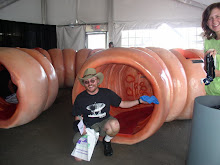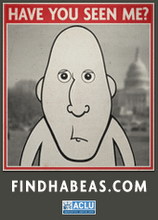Many new entrants take on the hard-rock core to define the finest music for driving around stoned -- 1973-75
As older friends got their first cars and driving around country roads
with beers and joints became the ideal way to spend the weekend, the 8-track
tape was suddenly everywhere – decent fidelity and a looped playback, not
requiring any rewinds or media flip-overs. In our part of mid-Michigan, driving
aimlessly while impaired was called “taping,” but it was never clear to me if
this was a reference to 8-track or cassette tapes, or something else entirely. On
rare occasions, the desire by corporate labels to place tracks of equal timing
on the four programs of 8-track tapes led to unexpected bonuses: Lou Reed’s Berlin, for example, featured four minutes of
orchestrated music on the 8-track that was not present on any other format
among the 1973 releases.
Certain tapes became de rigueur early on: Commander Cody’s Lost in the Ozone, J. Geils Band’s Full House, Deep
Purple’s Machine Head. But I learned a trick in that
early 8-track era about music rights and marketing of pirate editions. At local
gas stations and convenience stores, 8-track tapes were sold in unadorned
packages for cheap prices, no legal rights assumed (“of course it’s legit, what
kind of place do you think I’m running here?”). Because the pirate
manufacturers did not wish to incur the wrath of large labels, it was only
occasionally one might stumble upon a pirated version of Elton John’s Madman Across the Water or Neil Young’s Harvest. Far more often, one might find pirated versions of
less popular niche artists like New York Dolls, Mahavishnu Orchestra or The
Tubes. Of course, this fit in with my listening preferences, so I assembled a
collection of outsider music on the cheap. It was only barely discernible in
the early to mid-1970s that the smaller audio cassette was displacing the
8-track tape, in both automotive and home applications, due primarily to Dolby
noise reduction improving the audio quality of the former (I do not recall ever
seeing a pirated cassette, not sure why). The 8-track would not fade away until
the introduction of the Sony Walkman in 1979, however.
Friends were pretty forgiving
at being introduced to the Velvet Underground or Mott the Hoople, but it was no
surprise to find loud repetitive tunes like “Smoke On the Water” and “Lazy”
retaining their place as top driving-while-impaired tunes. And the programmers
of album-oriented rock took careful notice. Lee Abrams and the market analysts
copying his model pressured stations to make sure that these hard-rock
favorites were played over and over again on FM radio stations.
In 2024,
after the back-to-back deaths of Karl Wallenberg and Eric Carmen, a producer who
had worked with both musicians lamented that it was hard to get World Party and
Raspberries music on FM radio because of the influence of the “More Zep, bro!” contingent.
As much as I want to be partially empathetic to the hormone- and alcohol-fueled
teenage male, the Zep crew was in effect doing Lee Abrams’ job. Among my own
group of friends, maybe a third were truly inquisitive and open, while close to
two thirds were proud to demand the loud and familiar. To this day, many of the
aging head-bangers who were in the classic-rock mainstream don’t want to admit
they should be ashamed of what lunkheads they were in the 1970s.
By 1973, the trend got worse
with Led Zeppelin’s “Stairway to Heaven,” Lynyrd Skynyrd’s “Free Bird,” and at
least three or four tracks from Steely Dan’s debut album. The most frustrating
aspect of the dumbing-down of AOR was that these same tunes remained the most
played a decade, even two decades later, hence giving FM-based AOR its nickname
of “classic rock.” Few 1970s adolescents reaching the end of their teens saw
any problem with being stuck in the hard-rock hits of 1968-75, as they were
thoroughly convinced this was rock’s finest hour.
To be fair, some complex rock
works like Focus’s “Hocus Pocus,” Golden Earring’s “Radar Love,” or Edgar
Winter’s “Frankenstein” were innovative bright spots of fun in the charts. But
by 1973, I had not only given up on Top 40, I was even finding reason to be
skeptical of progressive-rock luminaries. The second and third albums of both
King Crimson and Genesis seemed to lag a bit. For Robert Fripp of King Crimson,
my turning point for appreciating the band again was the rise of the Red-era
ensemble. I heard Lark’s Tongues in Aspic while
driving all night to Colorado in the summer of 1973, and immediately became
convinced that the band with Wetton, Bruford, and Cross was the best
instantiation of Crimson ever. Similarly, once Genesis released The Lamb Lies Down on Broadway, all was forgiven – at least until
Peter Gabriel quit the band. In more mainstream environs, George Harrison and
Eric Clapton won some brownie points for organizing benefits for causes like
the new nation of Bangladesh. But because I was an early fan of Bob Marley and saw
him live in 1974, I was all too aware that Clapton’s cover of “I Shot the
Sheriff” represented a certain white-rocker ripoff of the reggae community, as
much as it represented an attempt to give Marley greater exposure.
The explosion of glam acts like
Roxy Music, Bowie, New York Dolls, Iggy, and Lou Reed in 1972-73 captured my
full attention, not due to gender questioning, but because the bands
represented the kind of excitement and spontaneity I associated with 1966. Some
bands broke through to Top 40 awareness – T. Rex’s “Bang a Gong,” Lou Reed’s
“Walk on the Wild Side,” several Bowie songs from Ziggy Stardust and Aladdin Sane, and songs from the post-Country Life Roxy Music. Because of this, teen friends of mine
were far more willing to accept glam rock in a little rural Midwestern town
than I might have anticipated.
It’s easy to read too much in
the acceptance of glam as far as any real challenges to hyper-masculinity in
rock, or as far as auguring a more collective approach to gay rights or women’s
rights in music in the mid-1970s. As far as masculinity in performance, dozens
of lead singers like Paul Rodgers followed the Jagger/Plant/Daltrey path into
the “cock-rock” self-parody, and carried plenty of teenage males along for the
ride. In fact, with the rise of hair-metal bands in the 1980s, many musicians
combined hyper-masculinity with teased hair and makeup, leading to a message
that was confused to say the least.
As far as cultural messages
for budding women or LGBTQ+ activists in the early 1970s, it was rare to see
anything beyond the superficial Helen Reddy “I Am Woman” message. A group of
Ann Arbor women activists centered on Meg Christian and what would become the Michigan
Womyn’s Music Festival formed Olivia Records in 1973. Lesbian activist Holly
Near had founded Redwood Records in 1971, but the label did not center on gay
rights and lesbian activism until two years later. The two labels reached their
heights of fame around 1976-82, but were scarcely visible in popular culture.
As for male gay rights, despite the regular presence of outspoken activists in
the 50 years following 1973, it was only the arrival of Tom Robinson in the
British punk movement in 1976 that married queer activism and anti-Thatcher
activism. Rarely did gay rights statements mix personal lifestyles and
collective politics until the AIDS crisis of the 1980s.
The
arrival of punk rock in 1976-77 would be rejected by many more mainstream
rockers who had accepted glam, both because punk artists defiantly tried to
stay underground, and because many listeners who were teens in the early 1970s
hit that point in their lives, often reached at the end of high school years,
when the search for new musical experiences slowly waned. Subsequent
observations of generations entering their college years or early 20s at later
dates confirms that most teens hit the end of music experimentalism around 18;
a small coterie of music lovers sustain the search for new music into their
mid-20s; but only a tiny few maintain that interest into middle or old age. It
became obvious to me before leaving high school that I was going to be one of
those life-long explorers.
I had my own set of
prejudices. The Southern California Eagles/Jackson Browne sound did little for
me, even though many were jumping on that particular bandwagon by the end of
1972. When I spent a week in Colorado in the summer of 1973, I developed a
little more patience with the genre later known as Americana, and with the
mainstream artists who had recorded at Caribou Ranch near Nederland, Colo. This
type of music was bound to be overplayed on both hit radio and AOR FM stations –
The Eagles’ “Hotel California” serving as an excellent example. But even after
rejecting those particular songs that were played to death, it was still
possible to find lesser-known Americana acts like Souther-Hillman-Furay Band,
that were much more fun than the mega-stars.
Over time, I found myself showing less
tolerance for the hard rock bands that crossed over into mass popularity. By
the mid-1970s I had written off many arena-rock bands of the KISS-Kansas-REO
Speedwagon-Journey variety that seemed to go nowhere in advancing musical
styles. To accentuate the tedium, 1974 seemed the year when it was required
that every mainstream hard-rock band release a double-live album. Yet even
among the pantheon of more progressive stars, I found it hard to get excited
over Pink Floyd’s Dark Side of the Moon – Floyd
had made more interesting albums, and would make more in the future. As for
Yes’s self-indulgent Tales from Topographic Oceans, I don’t
think I’ve forgiven them, even 50 years later.
It’s odd that I can’t
remember the first concert I attended. Perhaps there was a mainstream act I
attended with my family in the late 1960s or early 1970s, but it was only the
emerging acts of mid-decade that stuck with me, primarily ones that played
Detroit. In that category were Roxy Music, Bob Marley, Suzi Quatro, Lou Reed,
Bruce Springsteen, and The Who. I was especially lucky to catch the New York
Dolls at the highly unlikely yet oddly appropriate venue of a Lansing NASCAR racetrack,
Spartan Speedway, in a midnight show in May 1974, the same night as our Junior
Prom. We came in tuxes and evening gowns, of course. David Johansen was
rambling on about communist lipstick, of course. In 50 years of hindsight, the
circumstances seem all but unbelievable, but at the time, it seemed as though
the universe was behaving in precisely the right fashion.
That feeling would repeat
itself three years later as punk rock hit the Midwest. The biggest waves rarely
come with any harbingers. You simply have to approach them in matter-of-fact
ways, and only look back to reassess after the biggest waves subside. There is
also a legitimate debate about which waves might be big enough to ride. The
arrival of pub rock in 1972-74 through bands like Brinsley Schwartz and Graham
Parker & the Rumour, led to power-pop legends such as Nick Lowe, Dave
Edmunds, Robyn Hitchcock, and even Elvis Costello. At the time, the leading
fans of pub rock held great hopes for the genre, but it had been overtaken by
punk by 1976 to the extent of being remembered largely as a footnote by punk
fans.
The Vietnam War was waning
and few other social or environmental problems arising to take its place for engendering
outrage. Truth be told, Michiganders should have been up in arms about cattle
being mistakenly fed fire retardant in 1972-74, with the result that all
citizens eating milk, cheese, or beef in that period had a significant load of
polybrominated biphenyls (PBBs) in their bodies. But the universal reaction
among most college and high-school youth at the time was, “Damage already has
been done, this should accelerate your path to becoming a vegan anyway.”
I was finding it tedious to rally around
unjust drug arrests. Finding many former Michigan radicals heading to rural
homesteads, where they would sing Judy Collins’ “Cook With Honey,” didn’t
strike me as much of an avant garde movement either – in fact, I could foresee
many back-to-the-land hippies quickly becoming as conservative as their
neighbors. It was about this time I was
introduced to a small cloister of East Lansing intellectuals publishing a
quarterly broadside called The Spectacle, a media
vehicle for the Situationists. As I voraciously swallowed the works of Guy
DeBord and Raoul Vaneigem, I realized that these misfits had developed an
ideology that matched the size of the cultural enemy that freethinkers were
facing. I only realized in the following century that the Situationists had
accurately predicted the rise of the Internet and social-media culture. I
quickly scribbled their mission statement on my bedroom wall: “The Spectacle is
the organization of appearances made possible through modern means of communication.
The facility with which images can be detached and alienated from their
sources, and reorganized for representation in accord with the present ideology
of power, forms the basis for the unprecedented amplitude of the modern Spectacle,
where everything once directly lived has moved away into its own
representation.”
This was why any nod by a
musician to social change seemed so superficial and inadequate. Until the
arrival of Queen Patti Smith in 1975, the so-called liberatory nature of rock
music would look like just another co-opted set of slogans. After seeing The Spectacle tabloid, I dredged out the third issue of National Lampoon from 1970, in which Michael O’Donoghue’s “Crossing
the Rubicam” showed how every for-profit company hijacking a slogan in order to
sell stuff, helped to spell the demise of any movement that claimed to move
beyond such a thing. These conclusions did not depress me, but helped to place
any musician’s work in context. After all, the president was under
investigation and soon to be on his way out the door, the draft had ceased to
play a role in most young men’s lives, weren’t we all stoned and happy and
ready for some mellow Southern California music anyway? (Plenty of women,
LGBTQ+, and people of color were ready to answer in the negative, but little
could rouse the nation from its mid-1970s slumber. The occupation of Wounded
Knee, and the arrival of bands such as Redbone and Fanny, made for token
concerns with indigenous rights, but most such music of rebellion did not
register.)
Much was made in 2023 of the
50th anniversary of rap’s founding, but did it creep into national
awareness? In a very limited sense, though what was more evident was the
fragmentation of R&B into many subgenres: reggae and ska were critical new
interpretive voices, particularly in Europe and Latin America; the first
predecessors to disco were coming out via bands like Earth, Wind & Fire and
singers like Sylvia (who preceded Donna Summer). The descriptive labels (both
stigmas and positive labels) attached to artists were as challenging in the
early to mid 1970s as they would prove to be later. Some Black women singers
like Gladys Knight clearly wanted to retain earlier Motown traditions, while
fashion-leaning ensembles like Labelle and The Pointer Sisters were paving the
way for disco’s arrival. In fact, the first album of KC and the Sunshine Band
debuted in the spring of 1974. In the buzz of R&B’s multifaceted new
reality, early rappers like Grandmaster Flash were merely one voice among many.
But a fragmented R&B environment could still generate powerful singles – it
may be mostly lost to history, but Tower of Power’s “So Very Hard to Go” could
move a listener as much as any song from Motown’s heyday.
The era was an echo of 1966
in generating its own excitement even in the apparent calm before the storm. On
the threshold of Patti Smith, Ramones, and Sex Pistols, it was easy to forget
that Brian Eno and Robert Fripp released their first ambient collaboration
album No Pussyfooting in 1973, and Eno released two
jaw-dropping vocal pop albums in 1974, Here Come the Warm Jets and Taking Tiger Mountain by Strategy. Fripp himself took King Crimson to the
culmination of the Red-era trilogy, the dramatic Red. The
former band Halfnelson re-branded as Sparks in 1972 with A Woofer in Tweeter’s Clothing, and released two critical albums,
Kimono My House and Propaganda, in 1973-4.
Even David Bowie, who had annoyed a lot
of fans with the deliberately-disco Young Americans album in
early 1975, ended up using that album as a springboard to Station to Station and the Berlin albums that followed. (It’s eerie
to watch Bowie’s debut of the title song “Young Americans” on Dick Cavett in
December 1974, wearing white bucks and retro 50s fashion, in the same time
period that Phil Ochs was debuting an Elvis Presley throwback in live sets.
Ochs took his rockabilly into a depressive mode and eventual suicide, while
Bowie redirected his disco to electronic mysticism and punk production.)
In my senior year in high
school, I moved out of home and into a small shared apartment in a bad part of
Lansing. Music took on a special aura of snobbery, as I listened to more jazz,
a few challenging works like Steely Dan’s Katy Lied, and
headier singer-songwriters like John Prine and Steve Goodman. An old neighborhood
friend who had moved to California came back for a semester, and we’d have
little spats over who was the bigger intellectual, Donald Fagen or Jeff Lynne
(she was Camp ELO for life). To this day, it’s hard to hear references to Matty
Healy’s 21st-century band The 1975, because I had a feeling that this was The 1975, and I had the distinct feeling
something big was on the horizon.
In three weeks - Chapter 6 - Cultural Defiance for its Own Sake
Copyright 2024 Loring Wirbel











No comments:
Post a Comment